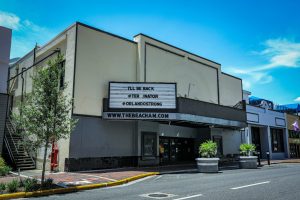Intelligent Transportation Networks for Scientific Research Missions
The advancement of technology has greatly impacted the way we conduct scientific research. With the advent of intelligent transportation networks, scientific research missions have become more efficient, reliable, and cost-effective. These intelligent transportation networks utilize cutting-edge technologies such as artificial intelligence, Internet of Things, and Big Data analytics to revolutionize the transportation of researchers, equipment, and data. In this article, we will delve into the depths of intelligent transportation networks and how they are transforming the landscape of scientific research missions.
The Need for Intelligent Transportation Networks in Scientific Research Missions
Traditional methods of transporting researchers, equipment, and data to research sites have always been a logistical nightmare. It often involves coordinating with multiple transport agencies, dealing with last-minute emergencies, and facing unpredictable weather conditions. Such challenges can result in delays, increased costs, and even pose a threat to the success of the research mission.
With the rise of scientific research missions that require remote and inaccessible locations, there has been an urgent need for a more efficient and reliable transportation system. This is where intelligent transportation networks come into the picture.
How Does an Intelligent Transportation Network Work?
An intelligent transportation network is a complex network of interconnected transportation systems, vehicles, and data processing systems that work together to optimize the transportation process. It utilizes real-time data analysis, predictive modeling, and autonomous decision-making to ensure seamless and efficient transportation.
Let’s take a look at the different components of an intelligent transportation network:
Real-time Data Analysis
One of the main features of an intelligent transportation network is its ability to process real-time data. By collecting data from various sources such as transportation vehicles, weather forecasts, and satellite imagery, the network can monitor the current conditions and make decisions accordingly. This allows for faster response times and better decision-making, resulting in a more efficient transportation process.
Predictive Modeling
Intelligent transportation networks also use predictive modeling to forecast potential issues that may arise during the transportation process. By analyzing historical data and using algorithms, the network can predict factors such as traffic congestion, weather patterns, and equipment performance. This allows for better planning and reduces the risk of delays.
Autonomous Decision-Making
Another key feature of intelligent transportation networks is the ability to make decisions autonomously. Using artificial intelligence, the network can analyze data, predict outcomes, and make decisions without human intervention. This results in a more efficient and streamlined transportation process.
The Benefits of Intelligent Transportation Networks for Scientific Research Missions
Intelligent transportation networks offer numerous benefits that greatly improve the efficiency and success of scientific research missions. Some of these benefits include:
Reduced Costs
With real-time data analysis and predictive modeling, intelligent transportation networks can optimize routes and save on fuel costs. Additionally, the use of autonomous vehicles reduces labor costs, making it a more cost-effective option compared to traditional transportation methods.
Faster Transportation
An efficient transportation process is crucial for scientific research missions. With intelligent transportation networks, delays caused by unforeseen circumstances are minimized, resulting in faster transportation of researchers, equipment, and data to the research site.
Improved Safety
The use of autonomous vehicles also improves safety during the transportation process. With no human drivers, there is a reduced risk of accidents caused by human error. Additionally, the real-time data analysis allows for better navigation and avoidance of potential hazards on the road.
Enhanced Data Collection
Intelligent transportation networks not only transport researchers and equipment, but they also transport data. With the use of Big Data analytics, the network can collect, process, and store vast amounts of data, resulting in more accurate and comprehensive research outcomes.
Challenges and Future of Intelligent Transportation Networks for Scientific Research Missions
Although intelligent transportation networks offer many benefits, there are still some challenges that need to be addressed. One of the main challenges is the high initial cost of implementing such a network. Additionally, there are concerns about the reliability of autonomous vehicles and the potential for cyber-attacks.
However, with continued advancements in technology, these challenges can be overcome, and the future of intelligent transportation networks looks promising. These networks have the potential to improve not only scientific research missions but also other industries that require efficient and reliable transportation.
Conclusion
In conclusion, intelligent transportation networks have transformed the way we conduct scientific research missions. With their ability to process real-time data, predict outcomes, and make autonomous decisions, these networks offer a more efficient, reliable, and cost-effective transportation process. As technology continues to evolve, we can expect to see further improvements in the capabilities of intelligent transportation networks, making them an essential component in the success of scientific research missions.











